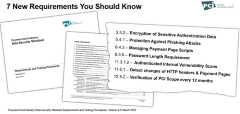

Chargeback Defense: Protecting Your Subscription Business in 2024
Chargebacks are an unfortunate burden for many subscription-based businesses. As convenient as recurring payments are, they open the door to more disputes and fraud. Companies must effectively manage and prevent chargebacks to avoid mounting fees and reputational damage.
Fortunately, new technologies are available to help detect, prevent, and manage chargebacks for card-not-present transactions. In this article, we’ll review how chargebacks work, their impact on subscription-based businesses, and effective strategies for limiting chargebacks and their impact on your bottom line.
Understanding Chargebacks
What is a chargeback?
Chargebacks occur when a customer disputes a card payment directly with their bank to obtain a refund. While some chargebacks are fraudulent, customers usually initiate them when they don’t recognize a charge, accidentally subscribe, forget to unsubscribe for a paid subscription, or aren’t satisfied with their product or service.
Because chargebacks are initiated directly through the customer’s bank instead of through your business, your money is immediately withdrawn from your merchant account, and your business must provide evidence to reverse the decision. Unfortunately, merchants have the burden of proof and only win about 42% of chargeback disputes, and they rarely recover revenue from them.[1]
How does a chargeback differ from a refund?
Unlike chargebacks, which the customer initiates with their bank, refunds occur when the merchant voluntarily returns funds to the customer. With chargebacks, the bank acts as an intermediary, while refunds are handled directly between the merchant and the customer.
How do chargebacks impact businesses?
A high volume of chargebacks can be incredibly arduous for your staff. Not only do they incur fees between $15 and $100 per dispute, regardless of the resolution, but chargebacks can also take 30–90 days to resolve, adding to administrative burdens. In contrast, refunds do not result in additional costs and only take a few days to complete.[2,3]
Merchants only recover revenue from around 1 in 8 disputes issued against them.[4]
What are the qualifications for a chargeback?
Customers can file chargebacks for a variety of reasons, but the most common include:
- Fraud: Stolen cards, identity theft, fraudulent applications, or unauthorized use
- Failure to Deliver Goods or Services: If the goods or services paid for are not delivered or rendered. These chargebacks are especially prevalent with pre-orders
- Product or Service Issues: Damaged, defective items, or those that significantly differ from what was promised
- Processing Issues: Duplicate charges, incorrect amounts, currency errors, or charges to the wrong card
Under all these circumstances, customers may file chargebacks through their bank to recover funds. While chargeback rights are designed to protect customers, some take advantage via “friendly fraud” and dispute legitimate charges. Generally, the bank defers to the customer and accepts the dispute, leaving businesses to prove validity or lose funds. Regardless of whether the merchant wins the dispute, chargeback fees may still be required.
Customers are not entitled to chargebacks for:
- Buyer’s remorse
- Failure to recognize a legitimate charge
- Minor issues, including shipping delays or dissatisfaction with their purchase
- Failure to adhere to refund or return policies
Chargeback Trends to Watch in 2024
As the chargeback landscape continues to evolve, trends that affect businesses across industries emerge. Understanding the latest developments is critical to effectively manage and prevent disputes.
What chargeback challenges are businesses facing in 2024?
Between 2022 and 2023, around 60% of subscription-based businesses noticed an increase in payment fraud that extends beyond traditional card-not-present fraud.[5] New fraudulent methods include:
- Friendly Fraud: When legitimate customers file dubious chargebacks for authorized purchases but later claim they are illegitimate or unrecognized
- Triangulation Fraud: When fraudsters list goods they do not have for sale and, when orders are made, use the stolen payment data to have retailers ship orders to unsuspecting buyers
- Exploiting Technology Loopholes: Gaps between e-commerce platforms and payment or subscription systems leave merchants vulnerable to fraud and illegitimate purchases
Chargeback Rates by Industry
Depending on the nature of the business, some industries are more vulnerable to chargebacks than others. The travel industry, for example, experiences high rates of cancelations, trip disruptions, and dissatisfaction with accommodations, making it a prime target for fraudsters.
| Industry | Chargeback Rate |
| Food & Beverage | 0–0.5% |
| Utilities & Services | 0.2–0.5% |
| Retail | 0.52–1% |
| Digital Goods & Services | 0.66–1.5% |
| Health & Wellness | 0.86–1% |
| Travel & Hospitality | 0.89–2% |
| Subscription Services | 0.9–1.2% |
| Electronics | 1–2% |
|
(Information collated by Chargebacks911 from data published by Clearly Payments and PaymentCloud, and the Chargebacks911 2023 Chargeback Field Report.) |
|
Subscription services, by virtue of their digital nature, are particularly vulnerable to chargebacks. For those that operate on a recurring-payments model, taking proactive measures to prevent chargebacks and mitigate their impact is critical.
Chargebacks and Subscription-Based Businesses
Recurring payment models open lucrative revenue streams but increase your vulnerability to chargebacks. With irregular billing cycles, complicated cancellation policies, and limited customer service availability for subscribers, opportunities for disputes are everywhere.
How are subscription-based businesses affected by chargebacks?
Subscriptions are hotbeds of confusion. Since payments are intermittent or span long periods, assessing the validity of chargebacks can be difficult. Linking disputes to their original purchases or agreements is arduous, adding more work for your finance and administrative employees.
Vague cancellation policies or customers who forget making purchases or authorizing subscriptions can lead to friendly fraud. And the abundance of micro-transactions authorized via mobile devices can further compound the confusion, leading to unrecognized charges, even if they are legitimate.
Managing & Preventing Chargebacks for Subscription Services
Mitigating the impact of and preventing chargebacks is imperative to keep costs under control, as excessive disputes can lead to fines, canceled accounts, reputational damage, and long-term revenue loss.
How can subscription-based businesses manage cancelations to prevent chargebacks?
If your customers properly cancel their auto-renewing subscriptions before their next billing cycle, no refund is required for the current period. Unfortunately, banks may force refunds via chargebacks if goods or services were undelivered or unused after documented cancelation attempts. Merchants who voluntarily refund unused portions of subscriptions can foster goodwill and avoid customer retaliation through negative reviews or chargebacks.
What legal factors should businesses consider to mitigate chargebacks?
For over a decade, the Restore Online Shoppers Confidence Act has regulated the transparency of subscription terms and cancelation processes. This act prohibits any online business from charging a customer unless they have disclosed all the material terms of the transaction and obtained express informed consent from the customer for the charge. This means that businesses must ensure that their terms and conditions are unambiguous and inform card networks when selling recurring services.[6]
In addition to these federal obligations, major card networks have also established regulations to expand their cardholders’ rights. For example, chargeback time limits have been extended, giving customers more time to dispute charges. Additionally, more transaction types are now eligible for chargebacks, including subscription and card-on-file payments.[7] This places an increased burden of proof on merchants to challenge chargebacks, protecting customers and exposing businesses to more illegitimate chargebacks.
How to Prevent Chargebacks
Many chargebacks originate from confusion over billing cycles, unrecognized transaction descriptions, and confusing cancelation policies. Reduce disputes from the start through transparency with:
- Clear terms and conditions – Ensure your product or service’s terms and conditions are easy to read with acceptance required for new subscription authorizations
- Purchase confirmation – Provide customers with purchase confirmation via email or text
- Renewal reminders – Remind customers when their subscription is up for renewal to reduce unrecognized charges
- Reliable customer service – Respond to customer concerns quickly to prevent minor issues from becoming chargebacks
You can also prevent chargebacks with enhanced security, tailored technology solutions that detect fraud, and robust employee training programs to ensure payments are processed correctly.
Enhance Your Security with PCI Compliance and Tokenization
Your business should always be PCI compliant to ensure payments are processed securely. Tokenization and encryption are your first defense in protecting your customers’ data and authenticating transactions to reduce disputes, including chargebacks. We recommend implementing both to protect cardholder data, shore up your defenses, and simplify your PCI compliance processes.
Tokenization replaces sensitive cardholder data with tokens, reducing the risk of data breaches and simplifying PCI compliance processes.
End-to-end encryption protects data from the point of purchase to its destination. When card information is encrypted, the vital information is scrambled by an algorithm. It can only be decrypted at the endpoint, making the use of information without the corresponding encryption key impossible.[8]
Implement Fraud Detection Technology
With AI and machine learning models, new technologies can detect suspicious activity and flag potential fraud in real time. And with technology that undergoes continuous updates and improvements, fraud detection solutions can keep up with bad actors’ schemes and tactics.
Invest in Employee Training
When you train your staff to complete transactions, verify customers’ payment information, check for errors, and get authorizations correctly, they become active agents in preventing disputes.
Set up clear quality control measures and ensure your customer service teams are prepared to quickly resolve disputes and refund transactions as necessary to prevent chargebacks and foster clear communication and goodwill with customers.
Reduce Chargebacks with Proactive Strategies
While chargebacks are a burden for any business, managing them doesn’t have to be. By taking proactive measures, businesses that accept recurring online payments can look forward to a more secure and stable financial environment where the focus can remain on customer satisfaction and company growth.
Summary
Chargebacks pose a challenge for subscription-based businesses. New technologies and proactive strategies can manage them, minimize administrative burdens, and reduce their impact on the bottom line. Clear policies, security measures like tokenization and encryption, and well-trained employees are key. “Chargeback Defense: Protecting Your Subscription Business in 2024” by Payway offers insights and strategies to safeguard against chargebacks.
[1] Chargebacks 911. Maximize Your Chargeback Win Rate: 5 Tips From the Experts (chargebacks911.com)
[2] Chargeflow. Chargeback Fees: Know Platforms Fees in 2023 (chargeflow.io)
[3] Chargeback Gurus. A Merchant’s Guide to Chargeback Time Limits (chargebackgurus.com)
[4] Chargebacks 911. Maximize Your Chargeback Win Rate: 5 Tips From the Experts (chargebacks911.com)
[5] NoFraud. The Top 3 Subscription Fraud Trends. The Top 3 Subscription Fraud Trends – NoFraud
[6] Restore Online Shoppers’ Confidence Act. Restore Online Shoppers’ Confidence Act | Federal Trade Commission (ftc.gov)
[7] Chargebacks911. Chargeback Time Limits: the Merchant’s Guide for 2024 (chargebacks911.com)
[8] Investopedia. Credit Card Encryption: What It Is and How It Works (investopedia.com)


